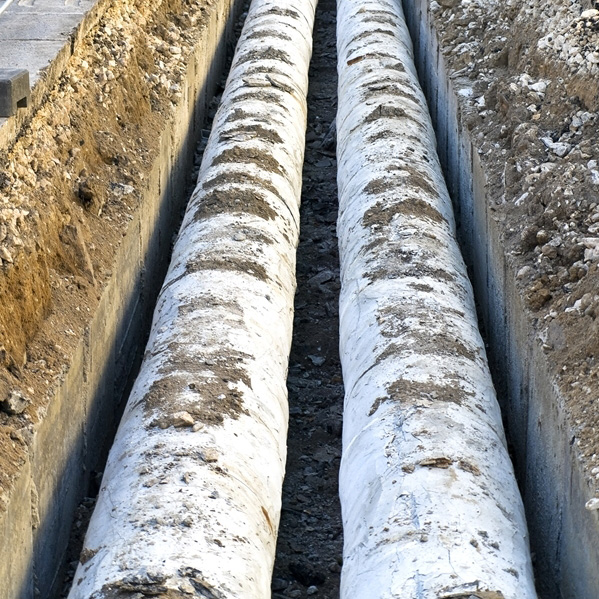How important is land use to building environmental impact?

How important is land use to building environmental impact?
A review of land use impact assessment methods, widely used to measure life cycle environmental impacts, shows both the importance of considering land use and the disparity of results.
Original Paper:
Allacker K., de Souza D.M., and Sala S. 2014. "Land use impact assessment in the construction sector: an analysis of LCIA models and case study application." International Journal of Life Cycle Assessment. 19. 1799-1809. DOI: http://dx.doi.org/10.1007/s11367-014-0781-7
Buildings are one of the enduring symbols of human society and the development process. They require a vast input of raw materials to build, operate, and maintain. As such, the contribution of buildings to societies' collective environmental footprint is sizable. In order to measure these impacts and encourage sustainable development, a slew of environmental assessment tools have been created. Among the many methods to quantify environmental impact is the life cycle assessment (LCA). LCA assesses production stages — from the raw materials to the finished product — and measures contribution to a wide array of environmental impacts, such as global warming, human toxicity, terrestrial eco-toxicity, and land use. It is meant to be comprehensive in order to prevent shifting environmental burdens from one impact category to another. But currently relatively few LCA studies of buildings and other products consider land use.
In order to assess the importance of this omission, authors from the European Union published a study in the International Journal of Life Cycle Assessment, examining the impacts of land use generated by both wood and cement construction of a standard single-family home. They pose three main questions: Is land use a decisive factor in the environmental footprint of a building? How important is the building lot compared to land use in the supply-chain? And how do the different home constructions compare? To answer these questions the authors construct material and energy models of the two home designs using life cycle assessment software. They then compare land use impact results received from a number of competing land use impact assessment models deployed within the software.
Regarding the first question, the authors find that the overall environmental impact of these two structures are similar and that inclusion of land use in the assessment can be a deciding factor in determining which building has the overall greater environmental impact. When looking more closely at the results they see that the choice of weighting factors used by each method, which judge the relative importance between impact categories, is key to making this determination. The authors also discover that the various methods consider transformation and occupation impacts of land use quite differently. Transformation impacts result from converting one land use type to another, for example forest to cropland. Occupation impacts are the result of preventing that land from returning to a natural state and performing ecosystem services, or the positive benefits nature provides to humankind, such as the natural treatment of pollution by wetlands.
Endpoint scores, which aggregate all environmental impacts into a single score, are used to assess the relative importance of land use in building lots versus that from resource extraction in the supply chain. The three different impact assessment methods produce divergent results highlighting the importance of choosing the right method for your analysis. Eco-indicator 99 (EI-99) provides the most comprehensive result assessing both transformational and occupational impacts of land use. EI-99 also assigns impacts for transformations between natural land covers. On the other hand, ReCiPe — which also includes both types of impacts — doesn't recognize an impact when converting one type of forest to another, for example. This can be viewed as a serious shortcoming of the ReCiPe method. EI-99 calculates that development of the building lot results in a greater impact. Impact 2002+ alternatively shows that land use in the supply-chain is more important.
A comparison between the two building types across all impact categories demonstrates that for all impact categories, except land use, the timber frame building exhibits better environmental performance. However, comparison of methods assessing land use impact shows broad agreement that a timber frame structure leads to greater land use impact. While this is generally true, the magnitude of the difference in results varies between 6 and 15 percent across the tested methods.
The study uncovers a number of key findings related to the assessment of land use impacts in building life cycle assessment. Most broadly, the study finds that the assignment of land use impacts can be a deciding factor in determining the cumulative impact of one structure versus another. This is due to the greater land use demands of timber and other biological building materials. Just as importantly the study finds that there is a need for greater agreement, or at least careful selection, among the different methods used to measure land use impacts. This is an area of active development within the LCA community, and the authors recommend that new methods being developed be quickly implemented within LCA software tools. This will allow their results to be tested while giving practitioners an enhanced ability to assess the importance of land use burdens in the overall environmental impact of the products, processes, and buildings that make the modern world go round.




